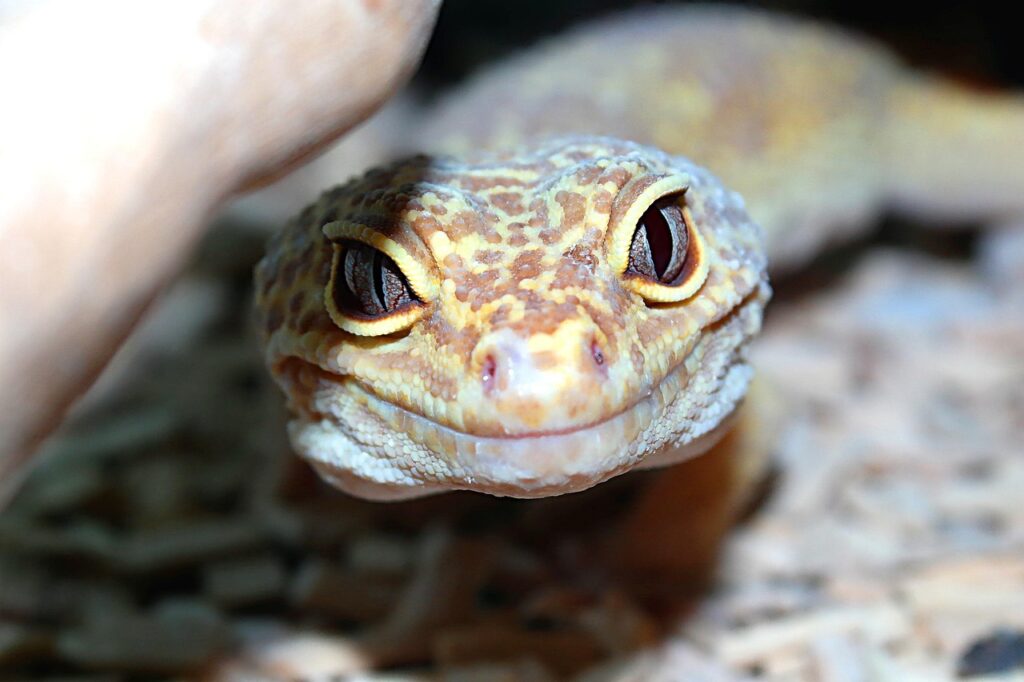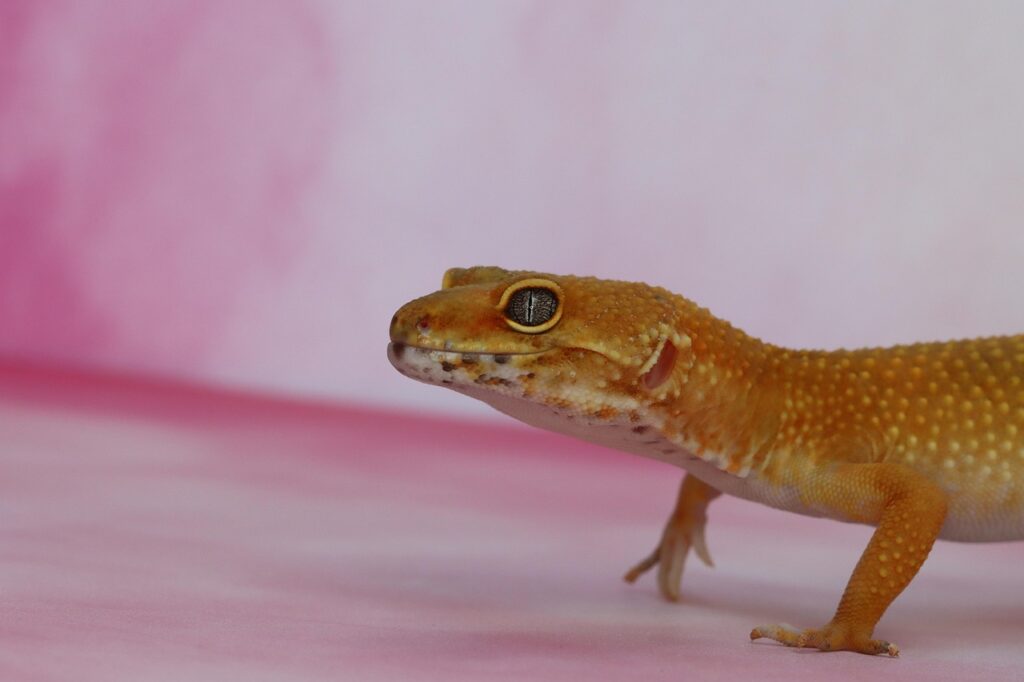Leopard geckos can turn pale for several reasons, and it’s important to figure out why. A common cause is shedding, where their skin becomes lighter before it peels off. This is natural and happens every few weeks.

Health problems can also cause paleness in leopard geckos. Issues like parasites or infections might affect their color. If your gecko is pale and not acting normally, it might need a vet visit.
Stress is another factor to consider. Changes in their environment or diet can stress them out, making their color fade. Keeping their habitat stable and comfortable is key to their well-being.
Understanding Leopard Gecko Shedding

Leopard geckos shed their skin regularly. This is essential for their growth and overall health. Maintaining proper humidity and hydration plays a crucial role in this process.
Shedding Process and Frequency
Leopard geckos shed their skin to grow. Young geckos shed more frequently than adults because they are growing faster. For a young gecko, shedding may occur every 1-2 weeks, while adults shed every 4-6 weeks.
Significance of Humidity and Hydration
Proper humidity helps the gecko shed its skin easily. A humid hide is necessary for moisture. Misting the enclosure or providing a shallow dish of water can also help. Hydration is key, too. Make sure the gecko always has access to clean water. Soaking the gecko in shallow, warm water can assist with difficult sheds.
Health and Environmental Factors

Leopard geckos can become pale due to several health issues and improper environmental conditions. It is important to create a suitable habitat and regularly monitor their health.
Ideal Habitat Conditions
The environment plays a significant role in a leopard gecko’s health. The enclosure should be kept at proper temperature and humidity levels. The ideal temperature is between 88°F to 92°F in the warm area and around 75°F in the cooler area. Humidity levels should be maintained around 30-40%.
Proper lighting is also critical. Ensure a light cycle of 12 hours on and 12 hours off. Leopard geckos need a hiding spot to feel secure and reduce stress. Use substrates like paper towels or reptile carpet to prevent ingestion of loose substrate, which can cause intestinal blockages.
Common Health Issues and Symptoms
Several health problems can cause a leopard gecko to appear pale. Dehydration is a common issue, often due to low humidity or lack of water. Signs include wrinkled skin and sunken eyes.
Infections, like bacterial or fungal infections, can also lead to pallor. Watch for symptoms such as lethargy, weight loss, or unusual spots on the skin. Parasites are another concern; they can cause stress and weaken the gecko’s immune system. If a gecko shows signs of illness, a vet visit is necessary.
Preventive Measures and Regular Care
Regular care and preventive measures help keep a leopard gecko healthy. Proper diet and nutrition are essential; feed a variety of insects like crickets and mealworms. Dust the insects with calcium and vitamins to prevent deficiencies.
Maintain clean and safe enclosure conditions. Regularly clean the habitat to prevent infections and parasites. Provide fresh water daily and monitor the gecko for signs of health issues. Keep stress levels low by handling the gecko gently and minimizing changes to its environment.
Preventive care includes regular health checks. Observe changes in behavior, eating habits, or appearance. Regular vet check-ups can also catch potential health problems early, ensuring the gecko stays healthy and vibrant.
Nutrition and Dietary Influence
Nutrition plays an important role in a leopard gecko’s overall health and appearance. Proper diet and supplements can affect their coloration and energy levels.
Balanced Diet and Supplements
Leopard geckos need a balanced diet to stay healthy. Insects like crickets, mealworms, and waxworms should be part of their regular meals.
Crickets and mealworms provide essential protein and fats. Waxworms can be used occasionally as they are high in fat. Offering a variety can keep your gecko interested and help prevent loss of appetite.
Calcium and vitamin D3 are vital supplements. Dusting insects with calcium powder helps prevent bone issues. Multivitamins, including vitamin A, also support skin health and color.
Fresh water should always be available to keep your gecko hydrated. Poor hydration can affect their skin and overall health.
Effects of Diet on Skin and Coloration
A well-balanced diet can directly influence a leopard gecko’s skin and coloration. Malnutrition may cause them to appear pale or dull. Insufficient calories and nutrients can lead to weak, unhealthy skin.
Calcium and vitamin D3 are crucial for healthy skin and bones. Lack of these supplements can lead to soft bones and other health problems. Vitamins also play a role in maintaining vibrant colors.
Insects that are not gut-loaded (fed nutritious food) before being given to the gecko may not provide enough nutrients. Feeding properly gut-loaded insects ensures your gecko gets the necessary nutrients for healthy skin.
Regular use of multivitamins supports overall health and enhances natural colors, making sure your leopard gecko is vibrant and lively.
